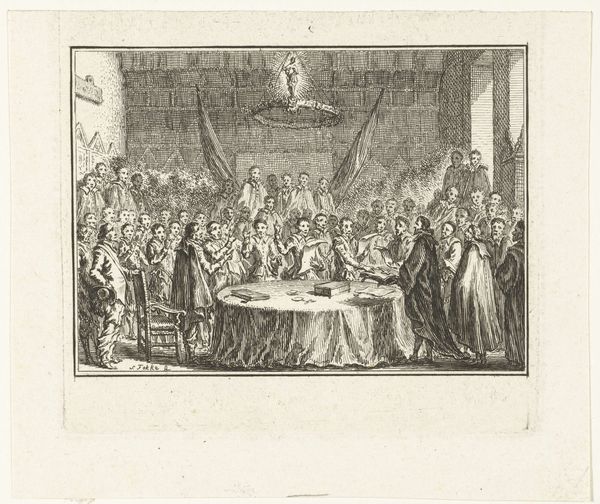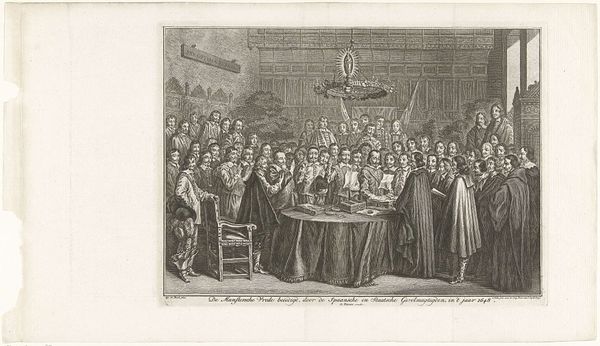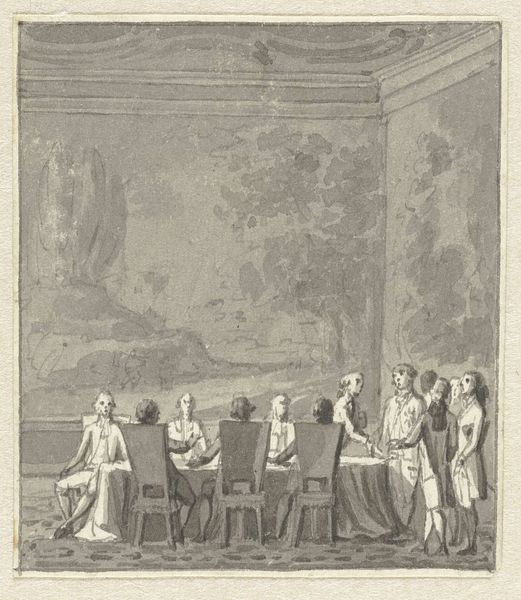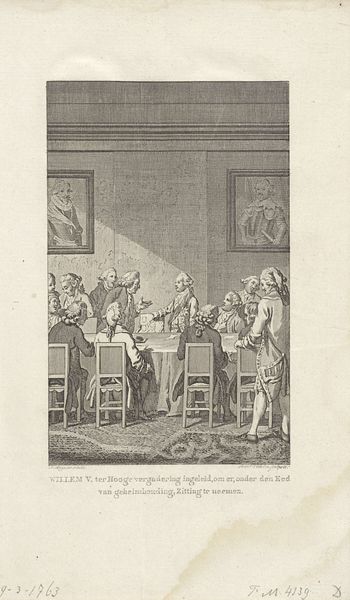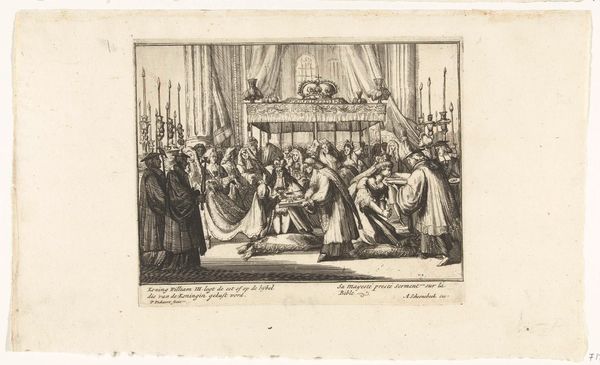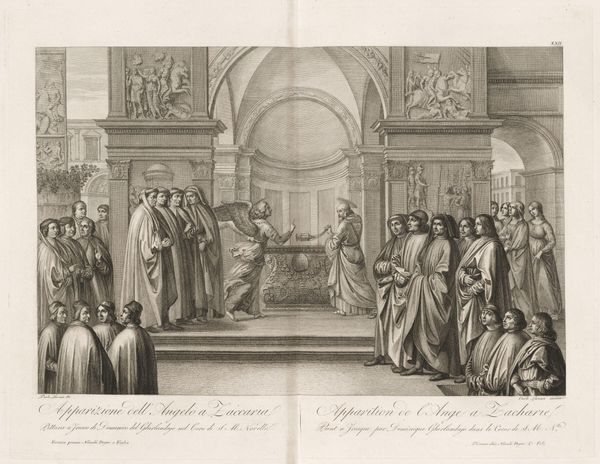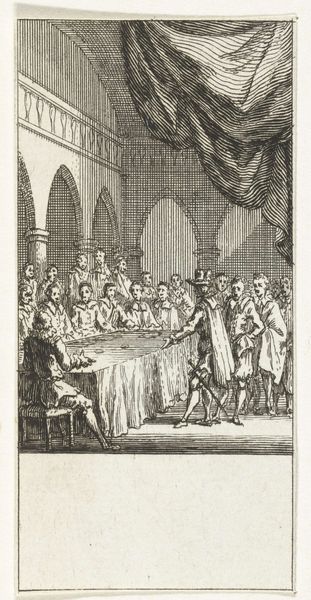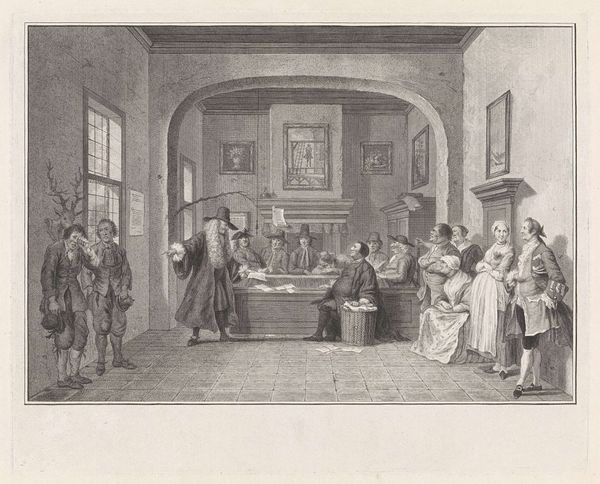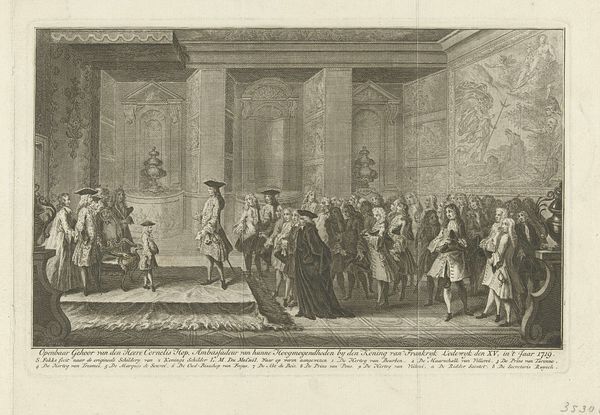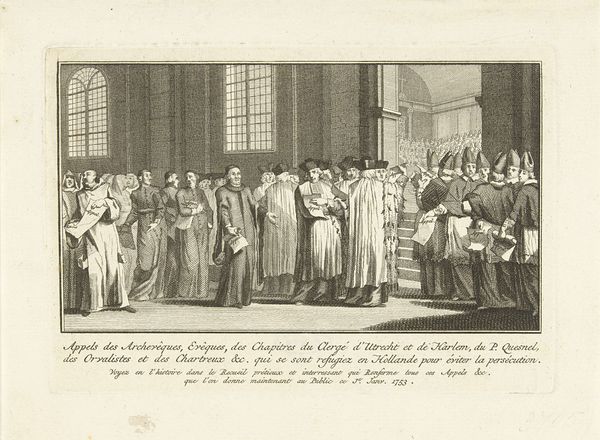
print, engraving
#
portrait
#
aged paper
#
baroque
# print
#
old engraving style
#
old-timey
#
group-portraits
#
history-painting
#
academic-art
#
engraving
Dimensions: height 275 mm, width 358 mm
Copyright: Rijks Museum: Open Domain
Curator: Before us we have Bernard Picart's engraving from 1728, depicting "Willem III wordt ingezworen als stadhouder, 1672," housed right here at the Rijksmuseum. Editor: The scene is crowded but incredibly still. A somber palette dominates, emphasizing the weight of the moment—something ceremonial, official, almost suffocatingly so. All eyes converge on the central figure. Curator: Indeed. The work showcases William III being sworn in as Stadtholder, and what interests me most are the ancestral portraits overlooking the scene. They are carefully arranged to convey lineage and historical legitimacy. A visual testament to power, don’t you think? Editor: Absolutely, but whose power are we truly witnessing? There’s a certain… unease. A tension between individual agency and prescribed destiny. I see a constructed narrative of leadership designed to exclude anyone from dissenting. A story that only centers a powerful, select group. Curator: Don’t overlook the importance of these symbolic displays. It wasn’t merely about power in the political sense, but more significantly about the image and ensuring continuity—solidifying their place in the collective memory. Editor: I understand the symbolic importance. The artist constructs meaning through rigid adherence to expectations—formal dress, unwavering gazes. But this carefully constructed tableau is ripe for subversion. Whose stories are silenced by this singular depiction of authority? Curator: Perhaps. But even the choice of engraving—the crisp lines, the replication of imagery, allowing a wider public to see and disseminate the narrative—that carries power in itself. These are images carefully crafted to be remembered and reproduced, reinforcing legacy. Editor: An actively reinforced legacy built atop societal systems. A reproduction doesn’t equate democratization. The people might witness it, but that doesn't give them any real stake. This image is a mirror for the powerful, not a window for the powerless. Curator: Maybe the true legacy resides in our persistent revisiting, challenging and reinterpreting those initial narratives across time. We are, in some ways, performing our own swearing in ceremony as we continue our exploration. Editor: Precisely, recognizing these representations within history, but always questioning whom they genuinely represent, and perhaps more critically, whom they implicitly omit.
Comments
No comments
Be the first to comment and join the conversation on the ultimate creative platform.
